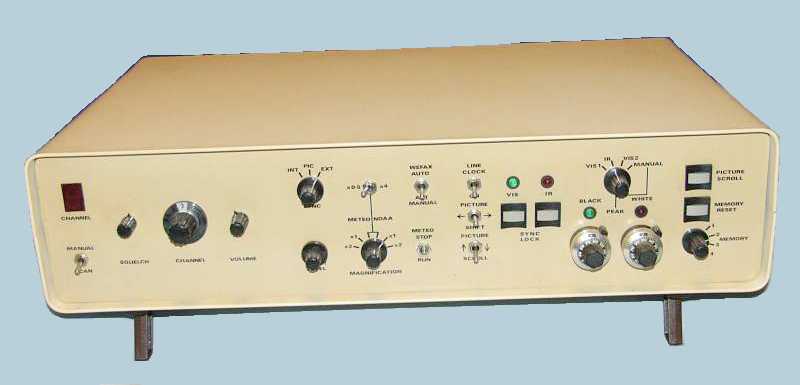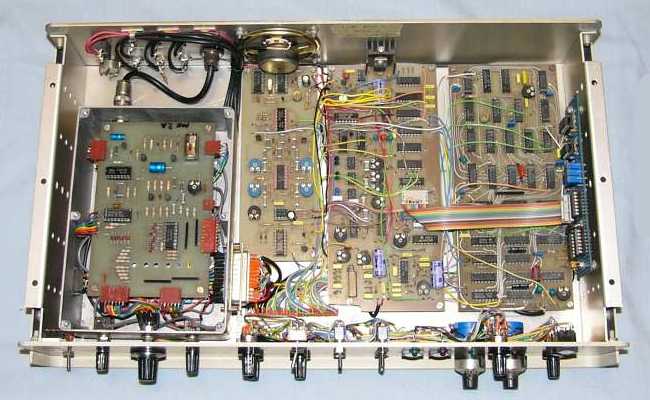
Having been interested in both the weather and electronics for many years, my first experience of receiving pictures was with a very good friend of mine (sadly now no longer with us) David Duff G3VYV.
We used a helical antenna to track the orbiting NOAA satellite. The antenna was connected to a Unilab interface and a Muirhead facsimile machine (about ½ the size of an upright piano).
This produced pictures direct onto photographic paper that had then to be fixed before you could see the images appear - before your very eyes - in a darkroom. A great thrill. That was in about 1980, and how times have changed.
It was not long after that the the Remote Imaging Group was formed and we both became members.
About the same time a German magazine, UKW Berichte, which was also published in English as VHF Communications, printed a series of articles by the radio amateur YU3UMV. These articles described how to build an electronic decoder that took the audio signals from a receiver and produced a composite video image to display on a black & white monitor. Several follow-up articles in the RIG magazine added extra features and higher quality images.
Here are a couple of pictures of the YU3UMV decoder that I built. Initially the construction, with its large number of interconnecting wires, resembled a bird's nest. I later painstakingly dismantled it and rebuilt it to a much higher standard. Unfortunately I don't have any before & after shots, only the after shots.

